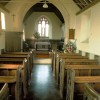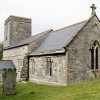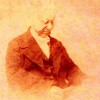On June 4th at about two o’clock in the afternoon, two hundred and eighty years ago, the cry of “FIRE!” was heard in the streets of Blandford. People stepped out from their businesses, some put down their drinks and others were called from their pleasures to see what all the commotion was about. They had no idea that by the end of the day their town would be burnt to the ground, the events of the day forever etched in history as the Great Fire of Blandford 1731.
The fire started outside of a soap boiler’s house when sparks fell from a chimney on to the thatch of a house standing on rising ground at the junction of four streets near the middle of the town. Blandford has a long history of fires: the last serious outbreak in July 1713 was still fresh in the memory of many of the inhabitants. This time they were better prepared and were able to quickly deploy three engines to tackle the blaze, although it soon became apparent these were not going to be enough.
Encouraged by a wind blowing from the north west, the flames with great agility settled on the buildings on the four street corners and from there excitedly raced along the streets swallowing up buildings and contents. Pewter melted and silver turned to dross. By seven in the evening scarcely a house was left untouched.
Townsfolk had grabbed what they could of their possessions and many had run to the church which, standing alone, was still untouched by the early evening. Some rested in the churchyard using tombstones to shield them from the heat. The fire still wanted to play and showed-off, tossing its sparks across the river towards neighbouring hamlets in the parishes of St Mary Blandford and Bryanston.
During the evening it was noticed that there was fire in the church steeple but the people managed to extinguish it only to see it break out again. At about two in the morning and twelve hours after the fire started the flames broke through the roof of the church, melting lead, splitting stones and dissolving the bells before it roared through the building. People raced to the church to salvage their possessions for a second time only to be beaten back by the scorching heat.
It was early morning before the fire abated. It stopped at the east end of the town, which is where the earlier fire of 1713 had started.
Some people were employed to keep watch over the few houses that did avoid the flames while others searched for missing relatives and children. It is thought some sixteen people perished; mostly they were elderly, their blackened remains found in the streets – evidence of the horror they endured.
The following morning plans had to be made to feed all the homeless and supplies were sent in by neighbouring parishes. Four hundred families were burnt out of their homes and barrack type accommodation was built, with thatch being added before winter set-in. These families had lost everything and several hundred pounds was paid out of public funds to help these people survive.
It is said the total loss over and above all insurance amounted to over £84,000. A subscription list was started to relieve the distress in the town. The King and Queen and the Prince of Wales gave £1,300 and generous sums were sent from London, Manchester, Birmingham and other distant towns and cities.
Out of all this devastation and misery arose the splendid Georgian town of Blandford we have today, largely designed and built by the Bastard Brothers.



